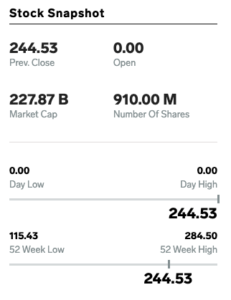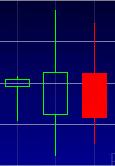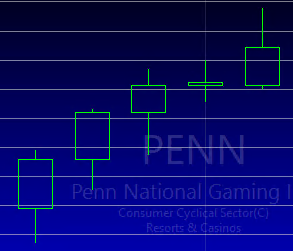
We talk about financial markets a lot; but exactly what do we mean by “markets?” If you’re new to trading, you may immediately think “NASDAQ;” but the NASDAQ is only one of several exchanges on the U.S. stock market; and the U.S. stock market is only one of many markets available to traders. Bond, foreign exchange, derivatives and cryptocurrency are just a few examples of markets that offer buyers and sellers promising opportunities to make money.
There is no one-size-fits-all approach when it comes to choosing a market; so be sure to do your research before adopting any new trading strategies.
Here are some tips to help you understand some of the most popular financial markets and what makes them tick.
What are financial markets?
Like any marketplace where goods are exchanged, financial markets make it possible for buyers and sellers to trade financial assets.
Take a moment and imagine your local farmer’s market. There are buyers, sellers and brokers. A buyer goes to a market in search of goods to purchase; while the seller attends a market in hopes of selling their goods to prospective buyers. In some cases, a seller may employ a broker who sells goods on their behalf for a commission. In the same way, a buyer may pay a broker to purchase goods on their behalf.
Each farmer’s market has certain rules participants must follow in order to ensure a fair and honest exchange of goods. For example, a seller may be required to prove ownership of the products they sell. Buyers may have to adhere to lines and pay taxes.
Finally, competition exists at any popular farmer’s market due to the vast variety of options available. Sellers will price their products based on supply and demand; and in some cases, buyers can negotiate lower rates.
Similar to your local farmer’s market, financial markets offer a space where institutional investors, retail investors and brokers connect to exchange securities and cold, hard cash. To trade successfully, financial market participants must adhere to rules that govern each market
and understand clearly how price works in order to negotiate the best rates and achieve profitability.
Financial market participants
Though not an exhaustive list, here are a few examples of the key players found in financial markets:
Retail investors
Assuming you aren’t a financial advisor, retail investors are individuals, like you, who bring money to market to purchase and sell securities. Depending on the market, retail investors may trade securities through a brokerage that acts as an intermediary for each exchange.
Retail investors are often motivated to build personal wealth and enter the market with less purchasing power than institutions. While the activity of any one retail investor is not enough to shift the market direction, the collective demand of retail traders can build momentum behind existing trends.
Institutional investors
An institutional investor is any company or organization that raises capital from clients or members to purchase and sell securities on their behalf. Examples of institutions include commercial banks, credit unions, insurance companies, pensions, hedge funds, real estate investment trusts (REIT), investment advisors, endowments and mutual funds.
Also known as “asset managers,” the world’s largest institutional investors manage billions of dollars. As a result, their buying power dwarfs that of individual retail investors. The sheer size of their positions can move prices substantially, creating huge waves that ripple throughout the market. Savvy traders follow the activity of institutional investors to predict trend reversals on both long and short sides.
Due to their size, institutional investors also act as a gateway into the stock market for public companies. Upon an initial public offering (IPO), companies will sell their shares to institutional investors first, who then release those shares slowly into the market for acquisition by eager retail investors.
Brokers
Brokers act as an agent, connecting buyers with sellers, executing transactions, and earning commissions on each trade. You may recognize these commissions as exchange fees, although many brokers in the stock market have recently moved to commission-free models, thanks to the advent of Robinhood.
In exchange for commission, brokers provide valuable services to traders, including a platform where trades are executed, charting and analytics tools and investment consultants.
Financial markets and rules that govern them
While financial markets share a common purpose, no two markets are created the same. Markets diverge in the types of securities exchanged, how transactions occur, and the rules that govern them.
While this is not a comprehensive list of all markets, we’ve done our best to summarize some of the most talked-about exchanges and how they work.
Stock market
Stock market investors exchange equity securities, also called “stocks” or “shares,” offered by publicly traded companies. The stock market is actually a network of exchanges including the NASDAQ, American Stock Exchange (AMEX), and New York Stock Exchange (NYSE). The term “stock exchange,” is also commonly used to refer to any one of these exchanges.
Each exchange represents a collection of indices, including the S&P 500 and Dow Jones Industrial Average (DJIA) index. These indices, in turn, track the supply and demand of 11 different market sectors including energy, financial and healthcare, to name a few. From here, we can further break down market sectors into industries. Much like the farmer’s market example above, there are more than 100 industries represented in the stock market including apparel retail, consumer electronics, entertainment, gold, silver and oil & gas.
Finally, there are about 2,800 individual public companies on the stock market that can be categorized by industry. For example, the technology industry represents a cluster of technology companies including Google, Microsoft, Apple and Tesla.
How it works
Stock prices are determined by supply and demand, and each share represents a percentage of ownership in a public company. Whenever you purchase or sell a stock, there’s a buyer or seller on the other end who’s willing to make a trade at your asking price. In the past, buyers and sellers bid for securities on a public floor. Today, exchanges happen primarily online with complex computer algorithms negotiating prices on behalf of buyers and sellers.
The stock market is open to anyone who has access to a broker. It is also possible to trade stock market indices indirectly through futures markets and exchange traded funds (ETFs).
Bond market
If the stock market offers equity securities (shares of ownership in a company), the bond market offers debt securities (shares of debt in a company). The bond market is made up of several different markets, including the mortgage-backed bond market, corporate bond market and emerging bond market, and can further be tracked by indices including the Barclays Capital
Aggregate Bond Index, Merrill Lynch Domestic Master, and Citigroup Broad Investment Grade Index.
How it works
In the bond market, investors purchase debt securities brought by government entities and publicly traded corporations that want to pay down debts. New bonds are issued on the primary market, and once acquired, are traded on a secondary market. Unlike stock prices that are determined by supply and demand, the value of bonds fluctuate based on market growth and inflation. Investors will pay a fixed payment over a fixed amount of time, earning profit on interest once the bond has matured. Bond market indices can also be traded indirectly through mutual funds and bond exchange-traded funds.
The bond market is considered an over-the-counter (OTC) market, meaning bonds are not sold in a centralized place. For the most part, bonds are still traded over the phone, although
web-based bond trading is on the horizon. Bonds are primarily traded by institutional investors. Retail investors can also participate in bond trading through asset-managed bond funds.
Foreign exchange market (forex)
If you’ve ever traveled and purchased a product abroad, you’ve likely made a forex transaction. The foreign exchange allows you to sell one type of national currency while simultaneously purchasing another. For example, if you travel from Europe to Japan, you will exchange the value of European Euros for the same value of Japanese Yen as determined by a set exchange rate, allowing you to make purchases with locally acceptable currency. The value comparison between two currencies is known as a “currency pair.”
How it works
The foreign exchange is an over-the-counter market, meaning there is no centralized regulatory body; rather, the exchange is run by a global network of banks and organizations. Currency valuations fluctuate based on global events and interest rates. Unlike the stock market which operates during set hours, the foreign exchange operates around the clock for nearly six days each week.
Cryptocurrency Market (crypto)
With the dawn of Bitcoin in 2009, the exchange of digitally encrypted assets is a relatively new phenomena. There is no centralized body to issue or back cryptocurrencies, making them highly volatile and vulnerable to hackers. Due to low regulatory barriers, there are more than 200 exchanges available to cryptocurrency traders.
How it works
There are no brokers in cryptocurrency, exchanges happen primarily peer-to-peer. Investors bring real money to the cryptocurrency market and speculate on price movement based on supply and demand.
Derivatives Market
With an often estimated value of more than $1 quadrillion, the Derivatives Market is arguably one of the largest financial markets to exist. While that valuation is understandably debated, the very nature of derivative instruments make them undeniably ubiquitous across markets.
A derivative can be procured from virtually any financial asset, including the aforementioned stocks, stock indexes, bonds, currencies, commodities and more. The price of a derivative instrument is determined by the value of the underlying financial asset it is derived from. Simply put, as the value of a financial asset fluctuates, so does the price of the tethered derivative.
How it works
The derivatives market is made up of several markets including, but not limited to, options, futures, and contract for difference markets (CFD). Sometimes criticized for its similarity to gambling, a derivative trade is made by executing a contract between two or more parties who then ”bet” on how much the price of an asset will increase or decrease by a specified date.
Derivative trades are most commonly executed as options and futures contracts. Options contracts give buyers and sellers the flexibility of trading (or not trading) an asset at a predetermined price at any time during the duration of a contract; while futures contracts require a buyer and seller to execute a trade at a specific price, on a specific date. Derivatives are traded over the counter, with some of the most commonly traded derivatives including commodities and interest rates.
The bottom line
With so many opportunities to make money in financial markets, it’s hard to become bored with trading. There’s always something new to learn. Explore the complexities of various markets, and get to know how they work so you can be a better, more informed trader. Diversify your income streams with both long-term and short-term investments by exploring various markets; and check out our ebook All Traders Need Multiple Income Streams for more ways to build wealth.











